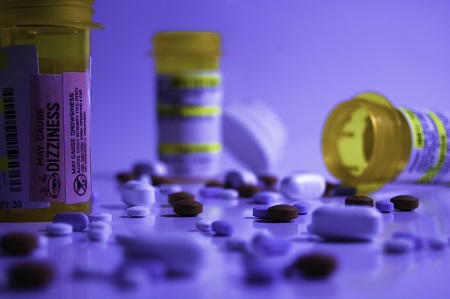The Social Aspect of Psychoactive Drugs
A psychoactive drug is a chemical substance that acts primarily on the central nervous system by changing brain function. This results in temporary changes in mood, perception, behaviour, and even consciousness.
Psychoactive drugs have a variety of uses. They may be used for medical purposes, as entheogens for spiritual or ritual purposes, for recreational purposes to deliberately alter one’s consciousness, or to improve performance.
The majority of these substances, particularly depressants and stimulants, can be habit-forming, resulting in chemical dependency and leading to abuse and addiction.
On the other hand, some of these substances, like psychedelics, can, in some circumstances, be used to treat, and even cure, addictions.
Psychoactive substances usually cause alterations in mood and consciousness, which the user may find pleasant, rewarding, and advantageous. This pleasurable effect may potentially lead to addiction. Moreover, continuous use of some substances may result in a physical and psychological dependence.

Classification of Psychoactive Drugs
Psychoactive drugs are classified into three forms –
- Depressants – Depressants slow down physical and mental activity. This includes alcohol, barbiturates, narcotics, and tranquillizers.
- Stimulants – Stimulants increase the activity of the central nervous system. This includes amphetamines, caffeine, cocaine, ecstasy, and nicotine.
- Hallucinogens – Hallucinogens modify perception, and produce unusual visual images. They include lysergic acid diethylamide (LSD), and marijuana.
Methods of Administration for Psychoactive Drugs
Psychoactive drugs are administered in different forms. They may be administered –
- Orally – as a tablet, capsule, powder, liquid, and beverage;
- Injection – by subcutaneous, intramuscular, and intravenous route;
- Through the rectum via suppository and enema; and
- Inhalation – by smoking, vapourisation, and insufflation.
The efficiency of each mode of administration varies from drug to drug.
Call our admissions line 24 hours a day to get help.
Addiction and Dependence to Psychoactive Drugs
Addiction or drug dependence are terms often associated with psychoactive drugs. Dependence can be divided into two types:
- Psychological dependence – A situation where a user experiences negative psychological or emotional withdrawal symptoms, such as depression, and,
- Physical dependence – This is a situation where a user must use a drug to avoid being physically uncomfortable or suffering fromwithdrawal symptoms.
The Effects of Psychoactive Drugs

As mentioned earlier, psychoactive drugs have the ability to alter the brain and affect mood, behaviour, and consciousness. When used for medical purposes, they produce effective results. However, when used uncontrolled for recreational purposes, they could have negative, and even deadly, consequence. The harmful effect of psychoactive drug use can be divided into three categories:
Chronic health effects – For alcohol, this includes liver cirrhosis and a host of other chronic illnesses; for tobacco, taken in cigarette form, this includes lung cancer, emphysema and other chronic illnesses. Through the sharing of needles, heroin use is a common mode for the transmission of infectious agents, such as HIV, and hepatitis B and C.
Acute or short-term biological health – For alcohol, and drugs such as opioids, this includes overdose. Also classed in this category are the casualties due to the substance’s effects on concentration, physical coordination, and judgement, in circumstances where these qualities are required. Casualties resulting from driving after drinking alcohol, or after other types of drug use, suicide and (at least for alcohol) assaults are also included.
Adverse social consequences of the substance use – Acute social problems, such as a sudden break in a relationship or trouble with the law, and chronic social problems, such as impacts on working life, employment, finances, or issues in family roles, are a common result of the use of these substances.
Consider the effects of eight commonly used drugs, in descending addictive order:
Cocaine is a stimulant psychoactive drug that gives a 15- to 30-minute rush of euphoria, which also immediately triggers agitation, depression, and, eventually, addiction. It blocks dopamine reuptake pumps, thus elevating levels of dopamine neurotransmitters in the brain’s synapses. It depletes the supply of serotonin, norepinephrine, and dopamine neurotransmitters in the brain, which is the main reason why the effects barely last an hour, and why users easily develop cravings for more. Cocaine is very addictive – 50% of those who receive treatment for addiction resume using the drug after only six months.
The health risks of cocaine abuse: insomnia, hypertension, malnutrition, and death.
Amphetamines, also known as “pep pills” or “uppers”, are stimulant psychoactive drugs that boost energy, keep users awake, and help them lose weight. Amphetamines activate dopamine receptors in the brain and are often prescribed in the form of diet pills.
The health risks of amphetamine abuse: extreme irritability, feelings of persecution, convulsions, insomnia, hypertension, malnutrition, and death.
Nicotine is a stimulant psychoactive drug that raises dopamine levels in the brain to improve attention and alertness, reduce anger and anxiety, and relieve pain. It is the main ingredient in smoking and smokeless tobacco. Tolerance for nicotine occurs both daily and long-term, and withdrawal symptoms last for months or even longer.
The health risks of nicotine abuse: nervousness, disturbed sleep, cancer, and cardiovascular disease.
Alcohol is a depressant psychoactive drug that slows down brain activity in the areas involved in inhibition and judgment. The effects of alcohol in the basal ganglia and the frontal lobe are the primary reason why alcohol drinkers tend to engage in compulsive drinking and develop pleasurable memory ties to past drinking episodes.
The health risks of alcohol abuse: depressed brain activity, slowed behaviour, reduced inhibitions, disorientation, loss of consciousness, damaged physical and mental health and social relationships, accidents, brain damage, liver disease, heart disease, ulcers, birth defects, and death.
Barbiturates are depressant psychoactive drugs that decrease the activity of the central nervous system. Heavy doses of barbiturates can impair memory and decision-making abilities, and may even cause death, as with some reported cases of suicide. Use of barbiturates can be lethal if combined with alcohol, and abrupt withdrawal often causes seizures. Some examples of barbiturates are Nembutal and Seconal.
The health risks of barbiturate abuse: breathing difficulty, coma, and death.
Caffeine is a stimulant psychoactive drug that boosts energy and alertness. Present in coffee, tea, cola drinks, and chocolate, caffeine is the most widely-used drug in the world. Overindulgence of caffeine, that is, consuming more than five cups, or at least 500 mg of coffee, is called caffeinism.
The symptoms of caffeinism include mood changes or irritability, anxiety, sleep disruption or insomnia, headaches, ringing in the ears, dry mouth, high blood pressure, digestive problems, lethargy, apathy, and concentration difficulties.
Marijuana is a hallucinogenic psychoactive drug that induces, in its users, a surge of spontaneous unrelated ideas; distorted perception of time and place raised sensory activity to sounds, taste, smells, and colours; erratic verbal behaviour, and impaired attention and memory. Its active ingredient, THC (or delta-9-tetrahydrocannabinol), disrupts neuronal membranes and affects neurotransmitter and hormonal activities. Physical effects include increased pulse rate, high blood pressure, reddening of the eyes, coughing, and dryness of the mouth. Regularly consuming large amounts of marijuana can alter sperm count and biological clocks.
The health risks of marijuana abuse: mild hallucinations, time distortion, attention and memory impairment, fatigue, disoriented behaviour, and respiratory disease.
Tranquillizers are depressant psychoactive drugs that reduce anxiety and induce relaxation. Some examples of tranquillizers are Valium and Xanax.
Call our admissions line 24 hours a day to get help.

The health risks of tranquillizer abuse: breathing difficulty, coma, and death.The Determinants of Drug Effects
Three major determinants have been theorised as responsible for the effectiveness of the use of psychoactive substances, whether in a controlled therapeutic environment or for recreational use. They are:
Type of drug, method of use, and dosage
Psychoactive substances used for therapeutic purposes, and in controlled environments, are often administered in the right dose. As a result, they are beneficial, even pleasurable. However, they become harmful, produce discomfort, or become deadly in higher doses.
Set
The set is the internal attitude and constitution of the person using the drug, including desires, fears, sensitivity, and expectations from the drug use. This factor is especially important for hallucinogens, as they have the ability to make conscious experiences out of the unconscious.
Setting
The third aspect is setting – it pertains to the surroundings, the place, and the time in which the experience transpires. For instance, some people feel more caffeinated when they drink a coffee at a café, rather than at work.
While psychoactive drugs may be useful as anaesthesia, in pain management, and in treating mental disorders, the abuse of these substances has adverse effects amongst which death.
Call our admissions line 24 hours a day to get help.

